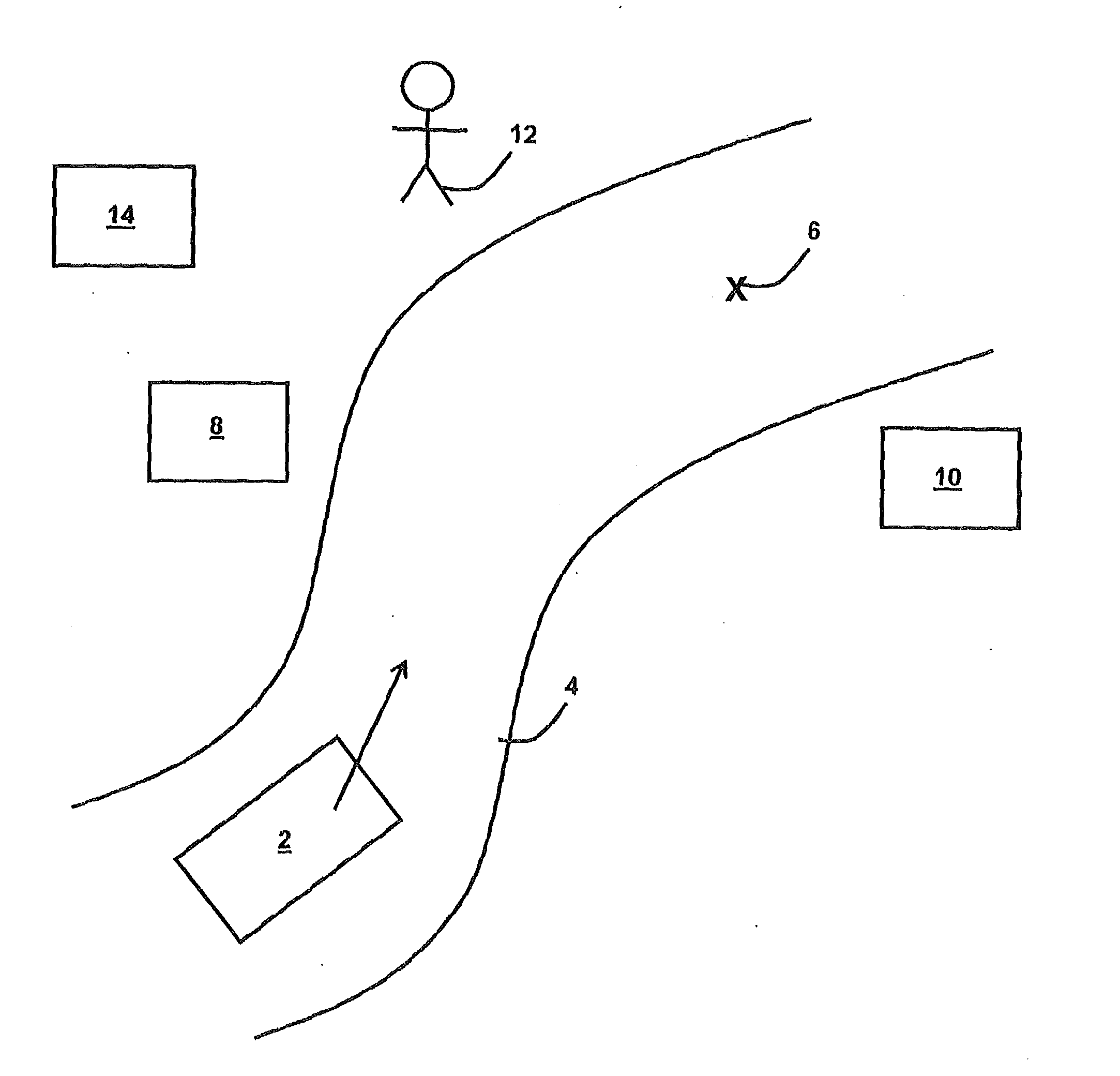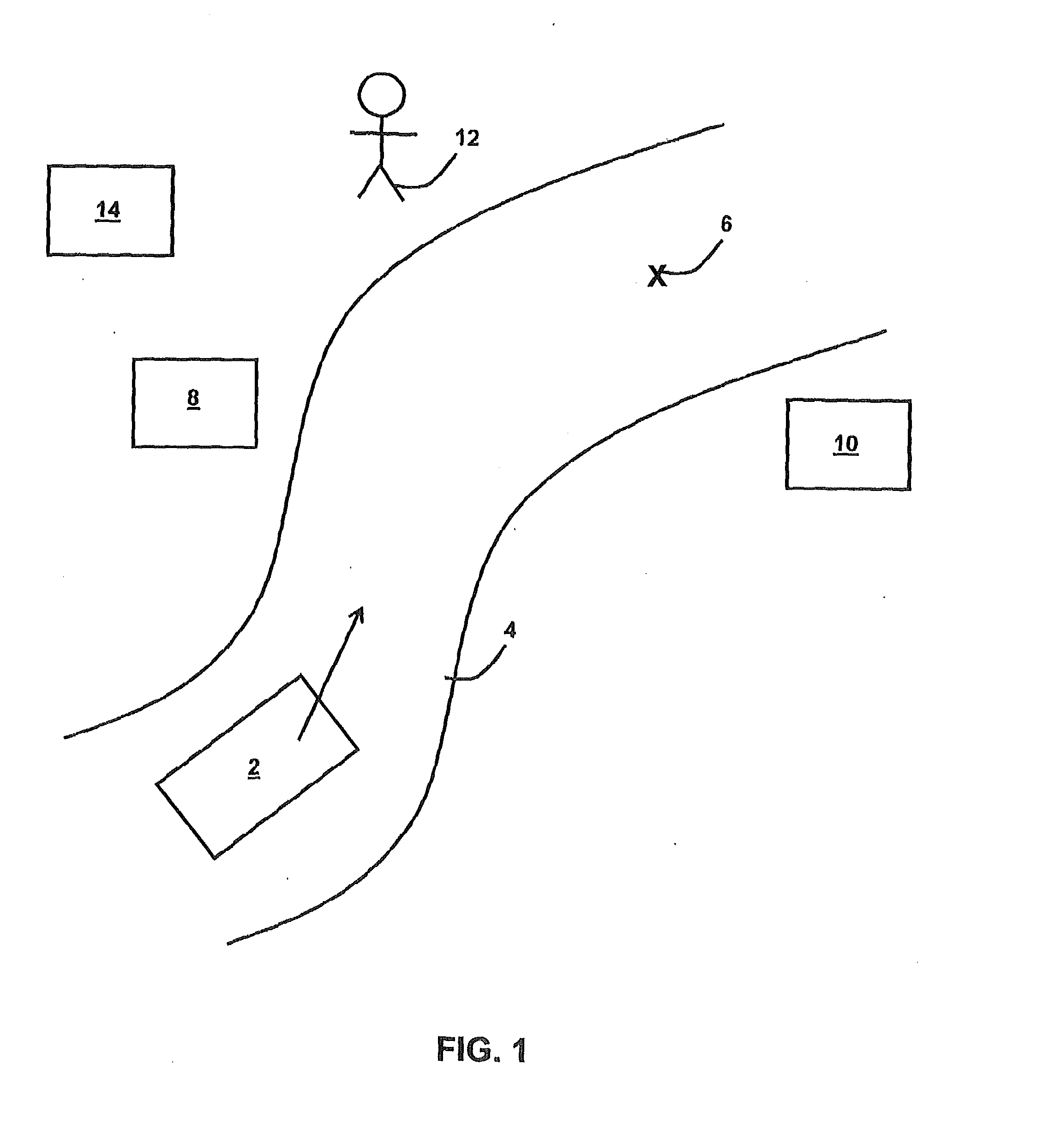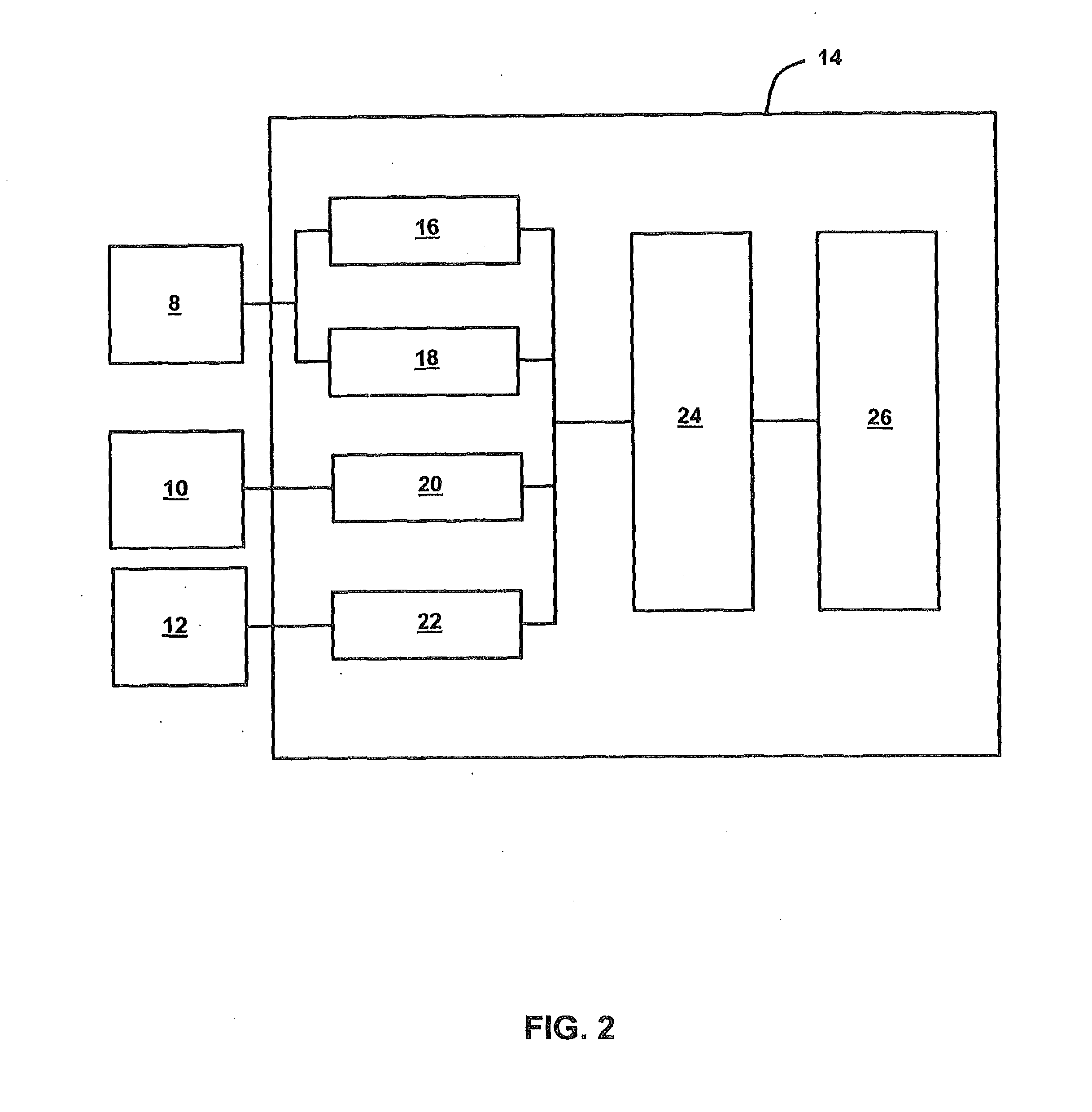Sensor data processing
a sensor and data technology, applied in the field of methods and apparatus for processing data, can solve the problems of limited flexibility of conventional rvm techniques, and the inability of conventional rvm to adequately model the uncertainty of an output corresponding to the outpu
- Summary
- Abstract
- Description
- Claims
- Application Information
AI Technical Summary
Benefits of technology
Problems solved by technology
Method used
Image
Examples
Embodiment Construction
[0027]FIG. 1 is a schematic illustration (not to scale) of an example of a scenario in which an embodiment of an information fusion method (described in more detail later below) is implemented.
[0028]In this example, a vehicle 2 is travelling along a road 4. The vehicle 2 is a land-based, manned vehicle.
[0029]In this example, as the vehicle 2 travels along the road 4, at some point in time the vehicle 2 will pass a check-point 6. In this scenario, the check-point 6 is a particular point on the road 4.
[0030]In this example, a visible-light detecting camera, hereinafter referred to as “the camera B”, an acoustic sensor 10, and a human observer, hereinafter referred to as “the human 12”, are arranged to detect the presence of the vehicle 2 as it passes the check-point 6. In this example, the sensors (i.e. the camera 8, the acoustic sensor 10, and the human 12) are heterogeneous data sources. The terminology “heterogeneous”” is used herein to refer to two or more data sources that are in...
PUM
 Login to View More
Login to View More Abstract
Description
Claims
Application Information
 Login to View More
Login to View More - R&D
- Intellectual Property
- Life Sciences
- Materials
- Tech Scout
- Unparalleled Data Quality
- Higher Quality Content
- 60% Fewer Hallucinations
Browse by: Latest US Patents, China's latest patents, Technical Efficacy Thesaurus, Application Domain, Technology Topic, Popular Technical Reports.
© 2025 PatSnap. All rights reserved.Legal|Privacy policy|Modern Slavery Act Transparency Statement|Sitemap|About US| Contact US: help@patsnap.com



